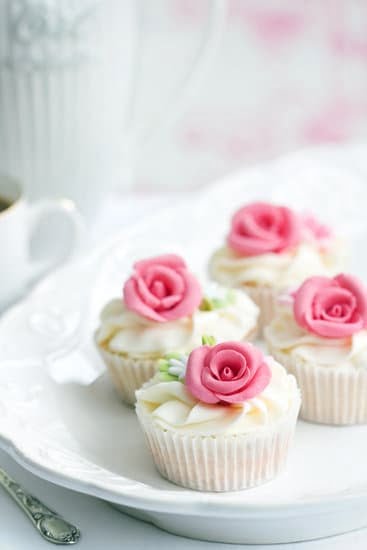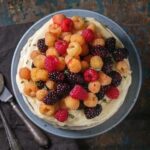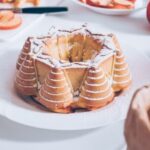Have you ever wondered how to decorate a cake to make it truly stand out? Cake decoration is not just about making a dessert visually appealing, but it also plays a crucial role in creating a memorable experience for anyone indulging in the sweet treat.
From birthdays to weddings and holidays, the art of cake decoration has the power to elevate the overall presentation, making it a centerpiece of celebration. In this article, we will explore the importance of cake decoration and provide insight into the various techniques, tips, and ideas for creating stunning and delicious works of art.
Cake decoration matters for several reasons. Firstly, it adds an aesthetic appeal that makes the cake more enticing and pleasing to look at. A beautifully decorated cake can set the tone for any celebration and create anticipation for what’s to come. Additionally, cake decoration showcases creativity and skill while enhancing the overall dining experience. Whether simple or intricate, the design of a cake can leave a lasting impression on those who enjoy it.
In order to master the art of cake decoration, it is essential to understand its basics and techniques involved. From using different types of icing to sculpting edible figurines, there are various methods that can be used to adorn a cake.
Moreover, choosing the right type of cake for decoration is equally important as it affects both the appearance and taste of the final product. This introduction sets the stage for exploring these aspects further in our subsequent sections on cake decorating essentials and creative ideas.
The Basics of Cake Decorating
Cake decorating is an essential aspect of creating a visually appealing and memorable dessert. Whether it’s for a special occasion or just to satisfy a sweet tooth, the way a cake is decorated can greatly impact the overall presentation and experience for the consumer. From simple designs to intricate creations, cake decoration allows for endless opportunities to express creativity and elevate the visual appeal of any baked good.
The basics of cake decorating involve understanding different techniques and acquiring the necessary tools and materials. Some fundamental techniques include piping, fondant work, and buttercream application. Each technique requires specific tools such as piping bags, tips, spatulas, fondant molds, and food coloring. Understanding these basics is crucial in achieving professional-looking results when decorating a cake.
When choosing the right cake for decoration, it’s important to consider factors such as flavor, texture, and shape. Certain types of cakes are better suited for specific decoration techniques. For example, a sturdy pound cake may be ideal for intricate fondant work, while a light sponge cake may work best with delicate piped designs.
Properly preparing the cake before decorating also plays a significant role in ensuring that the decorations adhere properly and withstand any handling. This can include leveling the cake layers, applying a crumb coat of frosting, and allowing adequate time for chilling before decorating further.
Choosing the Right Cake for Decoration
When it comes to decorating a cake, the type of cake you choose can greatly impact the final result. The flavor, texture, and shape of the cake are all important factors to consider when deciding on the best canvas for your decoration. Here are some tips for choosing the right cake for your decorating endeavors:
1. Consider the Flavor: The flavor of the cake should complement the design and theme of your decoration. For example, a rich chocolate cake may pair well with vibrant and bold decorations, while a lighter vanilla or lemon cake could be suited for more delicate and pastel-colored designs.
2. Think About Texture: The texture of the cake is essential for how well it holds up to different decorating techniques. A dense and sturdy cake, such as a pound cake or sponge cake, is ideal for intricate designs and sculpted cakes. On the other hand, a fluffy and moist cake like chiffon or devil’s food may work better with lighter decorations.
3. Pay Attention to Shape: The shape of the cake can influence how you approach your decoration. Round cakes are versatile and can be easily transformed into various designs, while rectangular or sheet cakes may be better suited for more structured decorations like piping or fondant work.
Preparing the Cake for Decoration
Before you start decorating, it’s crucial to properly prepare your cake to ensure optimal results. This includes leveling the layers, crumb-coating with frosting, and chilling the cake before applying decorative elements. Taking the time to prepare your cake will make it easier to work with and will ultimately contribute to a professional-looking finished product.
Essential Cake Decorating Techniques
Piping Technique
Piping is a classic cake decorating technique that involves using a pastry bag and various tips to create intricate designs and patterns on the cake. The key to successful piping is mastering the pressure and control of the pastry bag to achieve clean lines and precise details.
Different tips can be used to create different effects, such as star tips for borders, round tips for writing, and leaf tips for foliage designs. It’s essential to practice with different tip sizes and experiment with different icing consistencies to achieve the desired results.
Fondant Application
Fondant is a popular choice for covering cakes due to its smooth finish and versatility in creating elaborate decorations. To apply fondant, the cake should be covered with a thin layer of buttercream or ganache as a base. This will help the fondant adhere smoothly to the cake surface without air bubbles or creases. Once the fondant is applied, it can be shaped, molded, and embellished to create three-dimensional elements like flowers, figures, and decorative accents.
Buttercream Designs
Buttercream is a delicious and versatile medium for cake decoration that allows for both simple and intricate designs. With buttercream, decorators can pipe rosettes, swirls, ruffles, and other decorative elements directly onto the cake surface. Another popular technique is the “smooth buttercream” finish achieved by using a bench scraper or offset spatula to create a flawless surface on the cake. Additionally, buttercream can be colored with gel food coloring or blended in an ombre effect for stunning visual impact.
These essential cake decorating techniques provide endless possibilities for creating stunning cakes that are sure to impress any audience. Mastering these techniques takes practice but allows decorators to express their creativity and personalize their cakes according to any occasion or celebration. Whether it’s piping delicate details, molding fondant accents, or creating smooth buttercream finishes, these techniques are fundamental building blocks in the art of decorating a cake.
Creative Cake Decoration Ideas
When it comes to cake decoration, the possibilities are endless. Whether it’s a birthday, wedding, or holiday celebration, the right cake decoration can truly elevate the occasion. To decorate a cake for different occasions requires creativity and attention to detail.
For birthdays, consider fun and colorful designs with vibrant frosting and edible decorations like sprinkles or candies. For weddings, elegant and sophisticated designs such as delicate fondant flowers or intricate piping can add a touch of elegance to the celebration. And for holidays, themed cakes that incorporate seasonal elements like snowflakes for winter or floral arrangements for spring can be a delightful addition to any gathering.
For those looking for inspiration for themed cakes, consider incorporating elements that reflect the theme of the occasion. For example, for a superhero-themed birthday party, create a cake with iconic symbols or emblems from popular comic book characters. For a beach-themed wedding, use edible seashells and sea creatures made from fondant to adorn the cake.
Sculpted cakes are another creative option for those looking to impress their guests. These types of cakes can take on various shapes such as animals, objects, or even replicas of famous landmarks. Sculpted cakes require more advanced techniques and skills but can result in truly show-stopping creations.
In addition to themed and sculpted cakes, simple yet impressive designs can also make a statement at any event. Techniques such as ombré frosting (a gradual color gradient), abstract brushstroke patterns using food coloring, or even minimalist geometric designs can all make for visually stunning cakes that are sure to leave a lasting impression on guests.
| Cake Decoration Idea | Description |
|---|---|
| Themed Cakes | Incorporate elements that reflect the theme of the occasion |
| Sculpted Cakes | Creative option requiring advanced techniques that result in show-stopping creations |
| Simple Yet Impressive Designs | Techniques such as ombré frosting or abstract brushstroke patterns make visually stunning cakes |
Tips for Beginners in Cake Decoration
Cake decoration can seem daunting for beginners, but with the right guidance and practice, it can be a fun and rewarding activity. If you are new to cake decorating, it’s important to start with the basics. One of the first things you should familiarize yourself with is the essential tools and materials needed for cake decoration.
These may include piping bags and tips, offset spatulas, fondant smoothers, and food coloring gels. Understanding how to use these tools effectively is key to creating beautiful designs on your cakes.
When starting out, it’s also important to choose the right cake for decoration. A moist and sturdy cake is ideal for decorating as it will hold its shape and provide a good canvas for your design. It’s also crucial to properly prepare the cake before decorating by leveling it, filling any gaps with frosting, and applying a crumb coat to seal in any loose crumbs.
As a beginner in cake decoration, it’s normal to make mistakes along the way. One common mistake is being too heavy-handed with frosting or fondant, which can result in a messy or lumpy finish. Another mistake is not allowing enough time for layers of frosting or fondant to set before adding additional decorations. By taking your time and practicing patience, you can avoid these pitfalls.
| Essential Tools | Materials |
|---|---|
| Piping bags and tips | Fondant icing |
| Offset spatulas | Frosting/Buttercream |
| Fondant smoothers | Food coloring gels |
Troubleshooting Common Cake Decoration Problems
Dealing With Cracked Fondant
One common problem that cake decorators may encounter is dealing with cracked fondant. This can occur when the fondant dries out too quickly or when it is rolled out too thin. To prevent this issue, be sure to work with fondant at room temperature and knead it well to make it more pliable.
Additionally, rolling the fondant to a consistent thickness and covering the cake smoothly can help minimize cracks. If cracks do appear, a simple solution is to gently smooth them out with a small amount of shortening or edible glue.
Managing Air Bubbles in Buttercream Icing
Another common dilemma many cake decorators face is managing air bubbles in buttercream icing. Air bubbles can form when mixing the buttercream too vigorously or from not properly smoothing it onto the cake. To avoid this, try using a paddle attachment for your mixer and gently fold the mixture instead of vigorously stirring it.
When applying the buttercream to the cake, use a spatula to smooth it out slowly and evenly. If air bubbles still form, use a toothpick or small pin to gently release them by lightly tapping on them.
Preventing Color Bleeding in Piping Decorations
Color bleeding in piping decorations, especially when using royal icing or buttercream, can be frustrating for cake decorators. To prevent this issue, ensure that your icing consistency is appropriate for piping – too thin icing can cause colors to bleed into each other. Additionally, allowing each color layer to set before adding another can significantly reduce color bleeding. If you encounter any bleeding, use a clean paper towel to carefully blot excess moisture and color from the affected area.
By addressing these common cake decoration problems with these solutions, you will be better equipped to tackle any challenges that may arise during your decorating process. Remember that practice makes perfect and don’t be discouraged by these obstacles – they are all part of the learning experience for anyone looking to decorate a cake beautifully and skillfully.
Conclusion
In conclusion, cake decoration is an essential aspect of creating a visually appealing and memorable dessert. The presentation of a cake not only adds to its aesthetic appeal but also enhances the overall consumer experience. Whether it is for a special occasion or simply to satisfy a sweet craving, a beautifully decorated cake can bring joy and make an event even more special.
Throughout this article, we have explored the basics of cake decorating, including the different techniques involved and the essential tools and materials needed. We have also discussed the importance of choosing the right type of cake for decoration, as well as providing tips on preparing the cake before decorating. Additionally, we have delved into various creative ideas and provided tips for beginners in cake decoration.
Ultimately, cake decoration is an art form that allows individuals to express their creativity and imagination. It provides an opportunity to experiment with different designs, colors, and techniques to create something truly unique and impressive.
As we conclude this discussion on the art of expressing creativity through cake decoration, let us encourage everyone to embrace the joy of decorating cakes and to continue exploring new ways to enhance their baking skills and repertoire. Whether it’s for a special event or just for fun, let’s remember that there are endless possibilities when it comes to creating beautiful and delicious works of art out of cakes.

Welcome to our cake decorating blog! My name is Destiny Flores, and I am the proud owner of a cake decorating business named Cake Karma. Our mission is to provide delicious, beautiful cakes for all occasions. We specialize in creating custom cakes that are tailored specifically to each customer’s individual needs and tastes.





